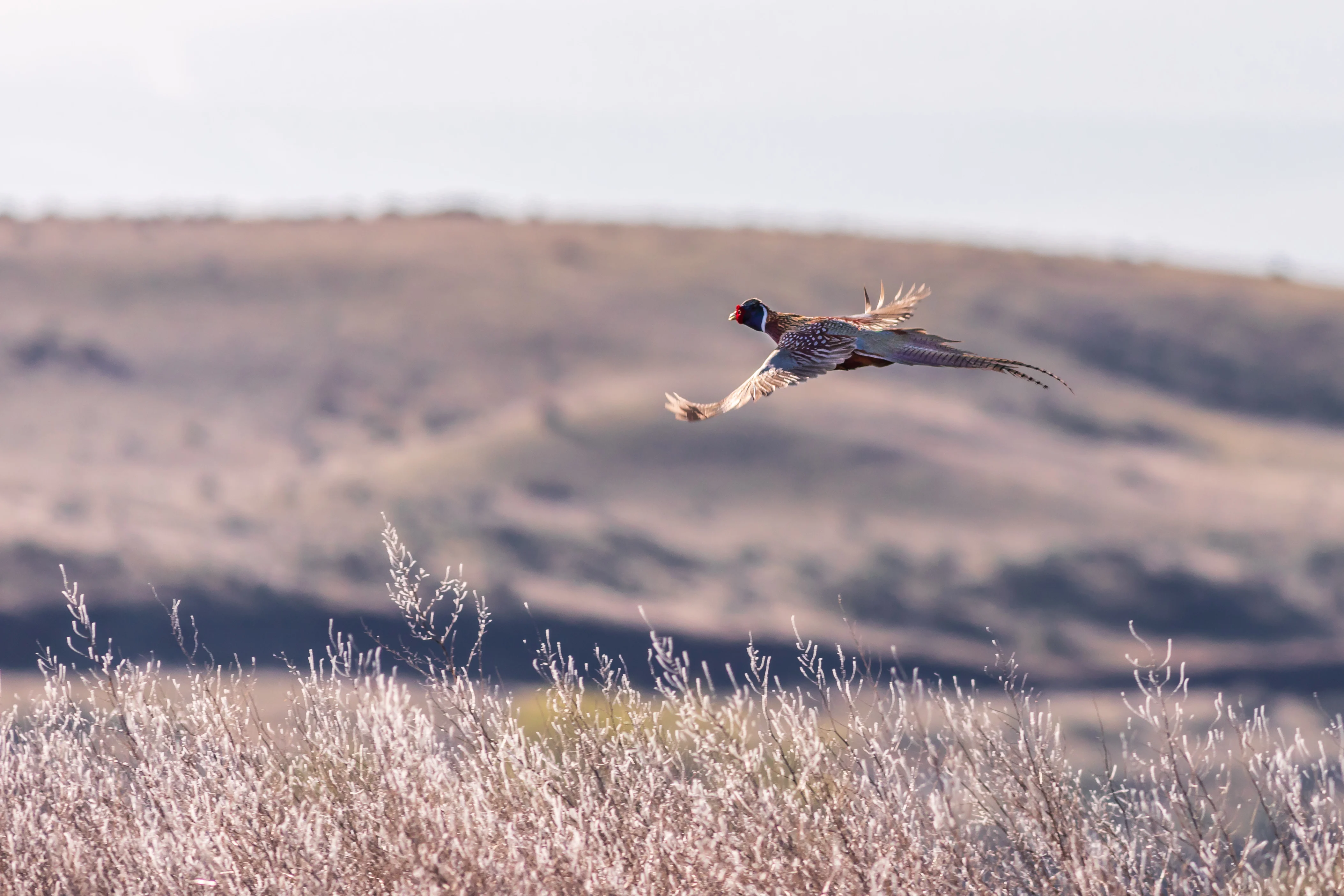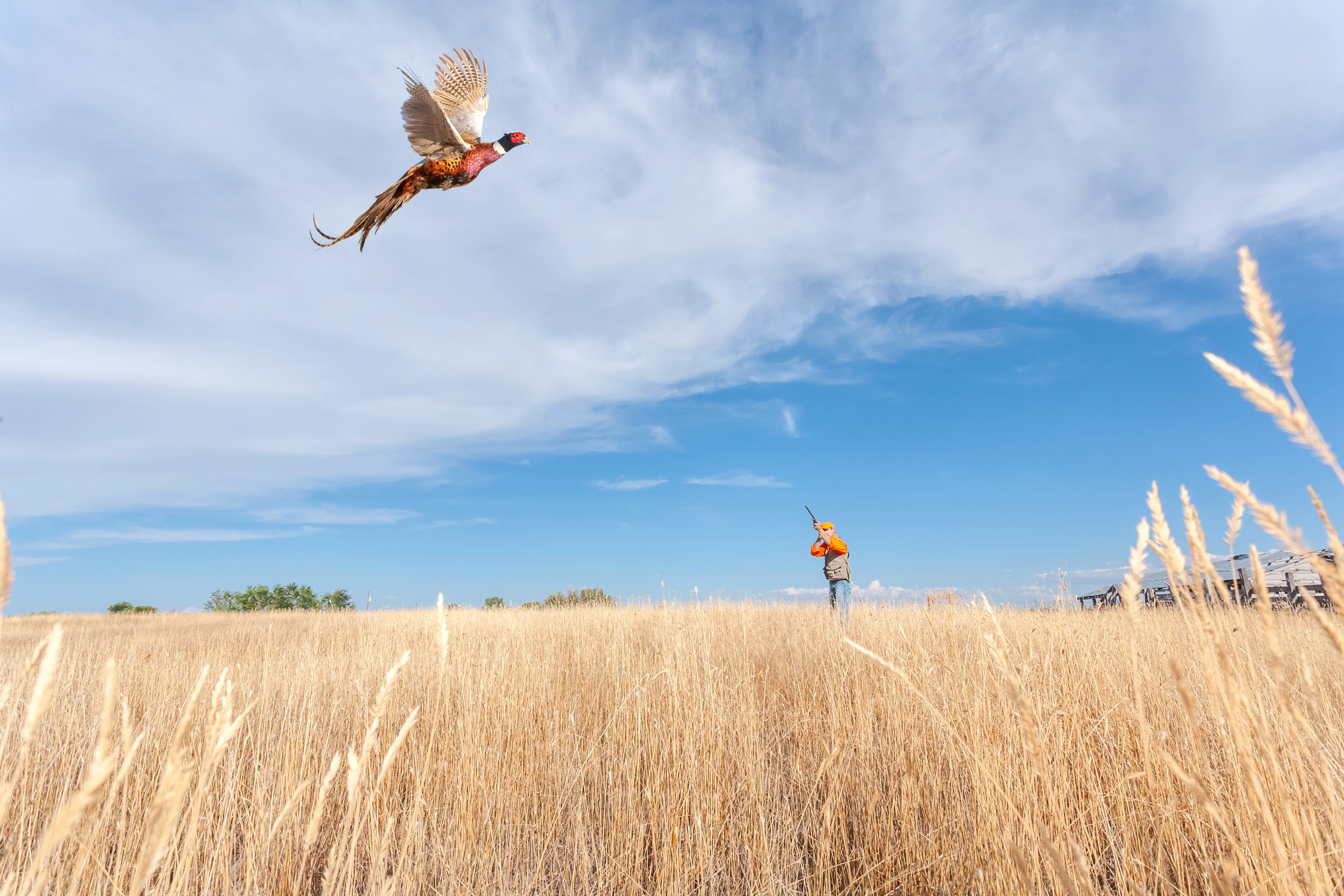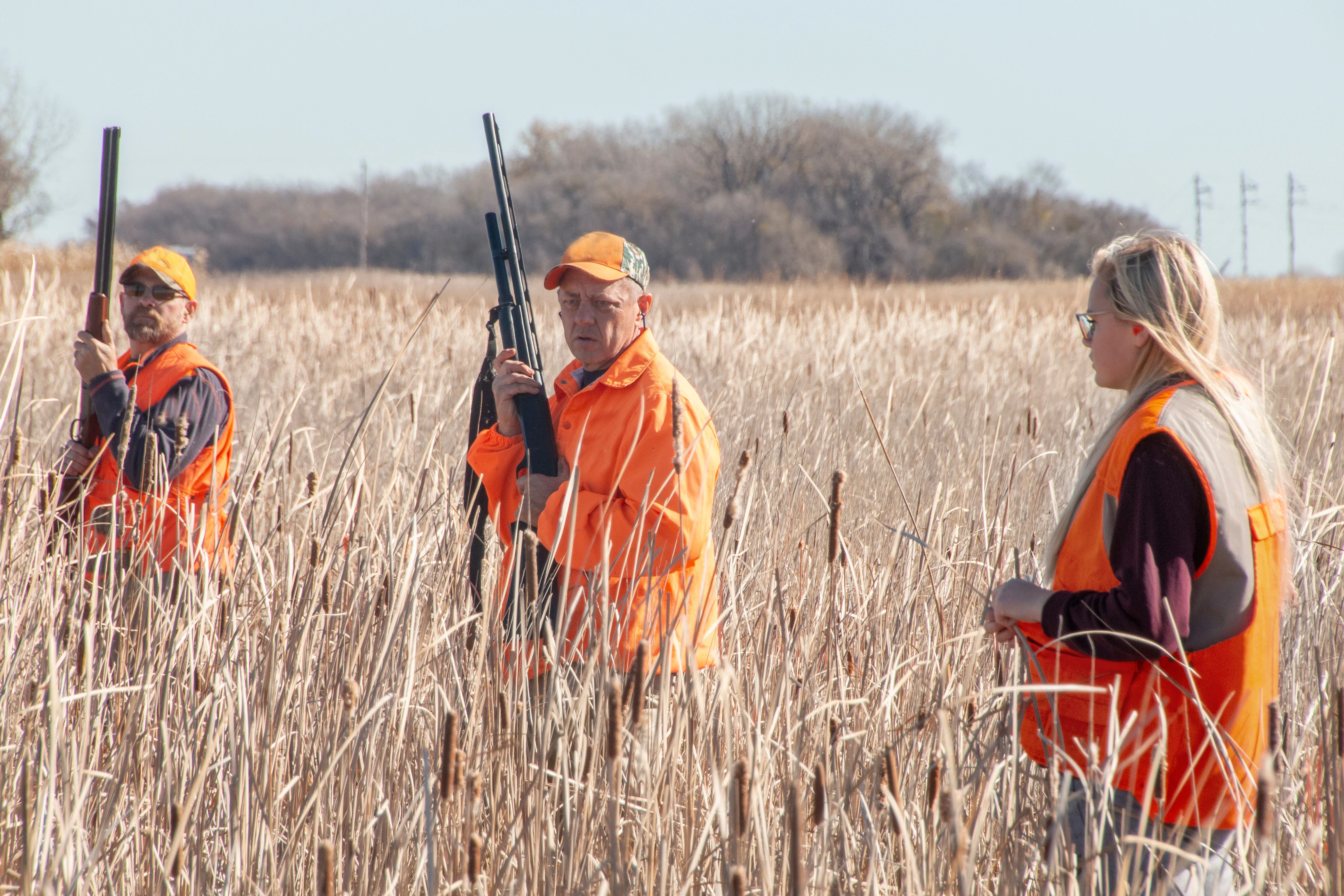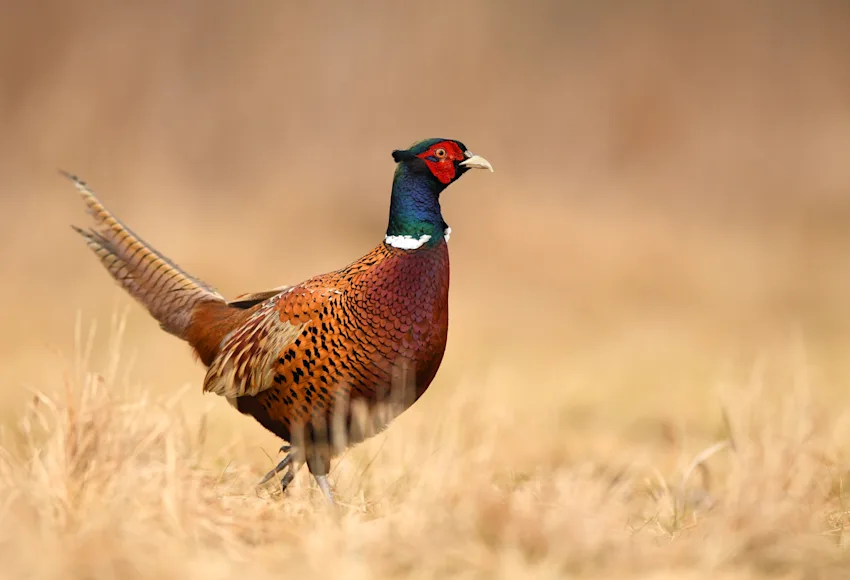Before I ever owned a gun dog, I walked up pheasants on the family farm by myself. While I wouldn’t go back to hunting without a dog, I remember the special thrill of dogless hunting: there’s no warning before you see the bird. Every flush is a jump-scare, especially when those roosters burst out of the grass almost directly beneath your feet.
Dogless pheasant hunting was common in the days of high pheasant numbers. Solo hunters walked fencelines and road ditches. Gangs teamed up to drive and block cornfields. Those tactics are valid today in the right cover, but you’ll walk a lot more miles between pheasants than your parents and grandparents ever did. They had enough birds to take pheasants for granted. You’ll work for every rooster you scare up, and you’ll want to treat it like the trophy it is. Here are ten tips for hunting pheasants without a dog.

1. Pick Your Spots
Small covers, like brushy waterways, center-pivot field corners, draws, road ditches (where legal), and fencelines are a dogless hunter's best bet. Pheasants run, they sit tight, and they fly. You need them to fly. If you can push them to an edge, they’re out of running room, and they’re more likely to slip up and flush. Start at the wider end, if there is one, and push to the narrow end. Always imagine you are driving pheasants ahead of you, because you probably are.
2. Learn to Shoot
Dogless hunters don’t get as many chances as hunters with dogs. That’s a simple truth. You have to make the most of every opportunity. All that money you save by not paying vet bills and buying dog food? Spend it at the range. Trapshooting is good practice for the straightaways and quartering shots that make up the majority of the chances you’ll get in the field. Skeet teaches you how to hit all the angles, and it’s a game better suited to using your hunting gun. Shooting from a portable trap is good practice, too, and you can focus on keeping your eye on the target and your head on the gun.
3. Take Good Shots
Compared to most other upland game birds, pheasants aren’t hard to shoot. They are hard to kill. When you hunt without a dog, you need your birds to hit the ground dead. There’s no retriever to bail you out if you only break a wing. The best shots at pheasants are close, going away shots, and quartering or crossing shots where the head, neck, and vitals are exposed. Ideally, you want to shoot pheasants between a little less than 20 to about 30 yards. Long, going away shots risk a poorly hit running bird. I don’t even take that shot with a dog, especially in heavy cover.

4. Pay Attention All the Time
Dogless hunters don’t have the early warning systems that a flusher’s buzzing tail or a pointer’s rock-solid point provide. When you hunt without a dog, pheasants can pop up at any time. You can’t react well to the flush if you’re trudging along looking at the toes of your boots. Be on constant alert. That doesn’t mean strangling the gun in a death grip and jumping at every sound. It means your eyes are always up, you’re carrying your gun comfortably in a way you can get it into action, and you’re visualizing a pheasant in the air. I used to liken the state of alertness you need for walking in a field to driving a car, where you can watch the road with a part of your mind alert to the fact that something might happen fast, while also carrying on a conversation or listening to the radio.
5. Be Quiet
Don’t kid yourself. Pheasants almost always know right where you are. Still, there’s no need to advertise your presence even more. Dogless hunters do have the advantage of stealth because they aren’t yelling at dogs. Ease the truck door shut. Keep talking to a minimum. The one time you can beat a pheasant’s hearing is on a very windy day when everything rustles. Sometimes, days like that make them impossibly skittish, but other times, you can get right up on top of them in the wind.
6. Hammer and Anvil
It was common in the days of bountiful pheasant numbers for hunters to form big groups. Many didn’t bother with dogs, or if they brought dogs, they were primarily used for pick-up duty. A large party can hunt big set-aside fields effectively. Detail several hunters to serve as blockers. They go to the far end of the field and space themselves along the end of the cover. The larger half of the group walks from the other end. The drivers should maintain a straight line for safety and set out toward the blockers. Some birds will flush along the way, and if you do this right, there are pheasants in the air everywhere as the drivers get close to the edge of the field. Obviously, safety is extremely important, and there can be no shooting at low birds in a hunt like this. If you can see the sky below the rooster’s belly, you can safely shoot.

7. Corner Them
A big field presents a daunting challenge for one or two dogless hunters. Chasing pheasants in a large grass field is like trying to grab minnows in a bucket. To trap them, walk from the inside of the field out to the corners. If you succeed in pushing them ahead of you, they will have to sit or flush (of course, they might just loop back around you in the grass. No one said dogless hunting was easy). But, your odds go up if you can corner the birds. Working the field edges is always worthwhile, too, as you might catch a bird that’s moving back and forth from food to cover as it lingers too close to the edge.
8. Pause
Pheasants hear a steady drumbeat of footsteps and hunker down to let danger pass by. They have excellent hearing, and they have bones in their feet that sense vibration. You want to make them uneasy. The way to do that is to pause periodically. If they don’t know where you are, they may get nervous and flush. Vary your pace, too. You want to get into their heads.
Any time you reach an edge or a corner, or when you meet up with a blocker, don’t relax immediately. Birds might be crouched right there. Give them a minute or more to flush. Just last fall, I met my hunting partner, who was blocking, at the top of a terraced hillside. I am not sure what our dogs were doing, but they weren’t there, and we stood, chatting, guns broken open for several minutes before a rooster flushed at my feet and flew off.
9. Block the Exits
Two or three hunters can borrow the hammer and anvil tactics of big groups on a small scale. As I mentioned, you always imagine you’re pushing running pheasants ahead of you. A blocker at the end of a piece of cover sometimes prevents those birds from sneaking out the back door or flushing wild. Give your blocker time to work into position, then drive toward them, pausing and zig-zagging as you go.
10. Mark Fallen Birds
When you shoot a bird, mark the spot where it fell as best you can and go straight to it. Dead pheasants can stay alive just long enough to bury themselves in the grass, and you’ll want to know exactly where to search. Dead pheasants can also come back to life. With about fifteen minutes left in the last day of last season, I shot my final pheasant of the year. It fell on the other side of a stout woven-wire fence and post-holed into a snowbank. The tailfeathers stuck up out of the hole, and when I saw that, I thought it would make a great end-of-the-season picture. I decided to hunt the last few minutes of the year, then go back for my photo and my bird.
When I got there, the pheasant was gone. If I had been hunting dogless, as I did so many years ago, the bird would have gotten away. Zeke found it, and I relearned the lesson that any hunter, especially hunters without dogs, needs to go to their birds right away.


